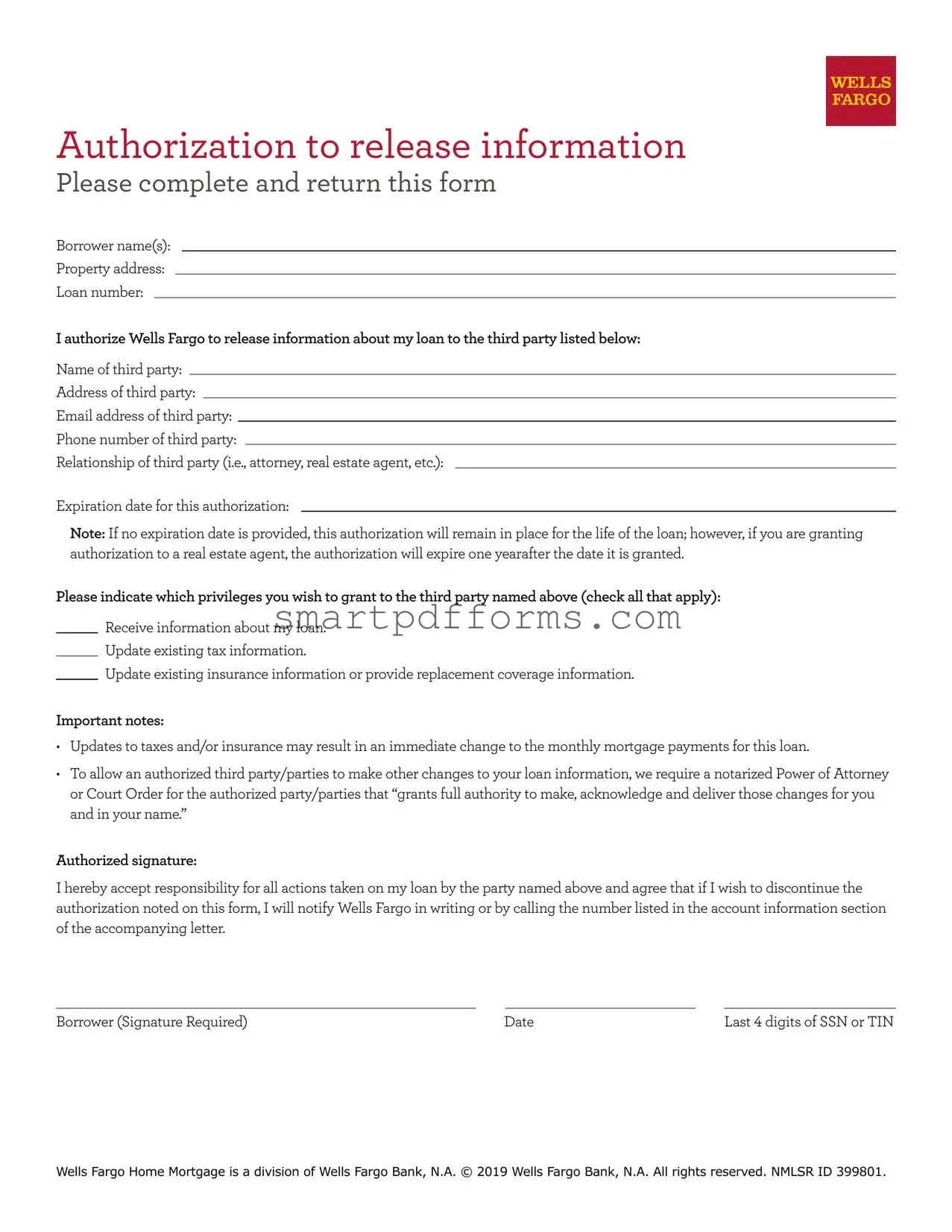Understanding the intricacies of banking and legal agreements can often lead to confusion. The Wells Fargo Authorization Form is no exception, surrounded by various misconceptions. Unpacking these can enlighten borrowers and third parties involved, ensuring they navigate these waters with more clarity and confidence.
Misconception 1: The form grants unlimited access to the third party.
One common misconception is that by completing the Wells Fargo Authorization Form, the borrower is giving the third party unrestricted access to their loan information and the ability to make any changes. In reality, the form specifies the types of information and updates that the third party is authorized to receive and make. These include receiving information about the loan, updating existing tax information, and updating existing insurance information or providing replacement coverage information. Any further changes require a notarized Power of Attorney or Court Order, emphasizing the form's limitations.
Misconception 2: The authorization is permanent if no expiration date is set.
Another misunderstanding involves the duration of the authorization. Although it's true that if no expiration date is provided, the authorization will remain in effect for the life of the loan, this applies with a notable exception. If the authorization is granted to a real estate agent, it will automatically expire one year after the date it is granted, regardless of whether an explicit expiration date is provided. This built-in safeguard serves to protect the borrower's interests over time.
Misconception 3: The form allows third parties to make payment changes.
A third misconception is that the authorization enables the third party to make changes to the monthly mortgage payments. The form does allow for updates to tax and insurance information, which might result in an immediate change to the monthly mortgage payments. However, any other changes to payment details, such as re-amortization or modification of the loan terms, fall outside the scope of this authorization and would require additional, specific legal documentation.
Misconception 4: The borrower cannot revoke the authorization once granted.
Finally, there is a false belief that once the borrower has granted authorization, they cannot revoke it. The form explicitly states that the borrower can discontinue the authorization at any time, provided they notify Wells Fargo in writing or by calling a specified number. This ensures that the borrower retains control over who has access to their loan information and under what circumstances. It's a crucial aspect that protects the borrower's rights and autonomy throughout the loan's life.
In dispelling these misconceptions, it becomes evident that the Wells Fargo Authorization Form is designed with specific checks and balances. These not only enable third-party interactions that can aid in the management of the loan but also safeguard the borrower's control and privacy.

